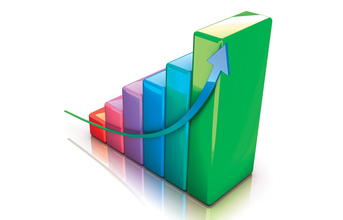
Following a subdued start to the third quarter of fiscal year 2019/20, the Indian manufacturing industry took a significant step forward during December. With new orders rising at the fastest pace since July, companies ramped up production and resumed hiring efforts. There was also a renewed upturn in input buying. Elsewhere, rates of input cost and output charge inflation accelerated to 13- and 34-month highs respectively. Rising from 51.2 in November to 52.7 in December, the headline seasonally adjusted IHS Markit India Manufacturing PMI® pointed to the joint-strongest improvement in the health of the sector for ten months. However, owing to a weak performance in October and November, the average quarterly reading for Q3 FY19/20 was the lowest since the three months to September 2017.
Four of the five sub-components of the PMI increased in December, while suppliers' delivery times was unchanged from the preceding survey period.
At the sub-sector level, growth was led by consumer goods, though intermediate goods also made a stronger contribution to the headline figure. Meanwhile, capital goods remained in contraction. Indian manufacturing output rose at a marked pace in December, the joint-fastest in ten months. Companies that signalled growth commented on the securing of new work, the successful launch of new products and improved technology.
New work increased solidly, with the pace of expansion picking up to the fastest since July. Where growth was noted, firms reported marketing successes, new product drives and better demand conditions.
The uptick in total sales was supported by higher demand from overseas. New export orders expanded for the twenty-sixth month in a row, albeit modestly.
Commenting on the latest survey results, Pollyanna de Lima, Principal Economist at IHS Markit, said: "The uptick in Indian manufacturing sector growth signalled by the latest PMI results will be welcomed by policymakers, particularly given the concerning results observed in October. "Factories benefited from a rebound in demand, and responded by scaling up production to the greatest extent since May. There were also renewed increases in input purchasing and employment during December. "However, a note of caution is evident from the survey's measure of business confidence. The degree of optimism signalled at the end of 2019 was the weakest in just under three years, reflecting concerns over market conditions, which could restrict job creation and investment in the early part of 2020. "At the same time, price indicators showed accelerated rates of inflation for both input costs and output charges. The latter reflected a combination of improved pricing power, given the favourable demand environment, and efforts to protect margins from cost rises."
Buoyed by strengthening underlying demand, goods producers resumed their hiring efforts in December. The rise in employment reversed the fall noted in November and was the strongest since February. Still, outstanding business rose further. Firms also increased input buying at the year end, following contractions in each of the prior four months. The rise was only marginal, however, and failed to impact on vendor performance. Although stocks of purchases continued to decline, the contraction lost strength. In fact, the pace of depletion was only fractional. On the other hand, holdings of finished products decreased sharply in December.
Amid reports of higher prices paid for chemicals, food, metals, paper, plastics and textiles, average cost burdens increased further. Moreover, the overall rate of inflation reached a 13-month high. In order to protect margins, goods producers lifted their fees again in December. The rate of charge inflation was solid and the quickest in close to three years.
Despite the improvement in operating conditions during December, companies were cautious regarding the year-ahead outlook. On average, production is expected to expand in the coming 12 months, but the degree of optimism weakened to a 34-month low.
END
Sources: IHS Markit, CSO.





































